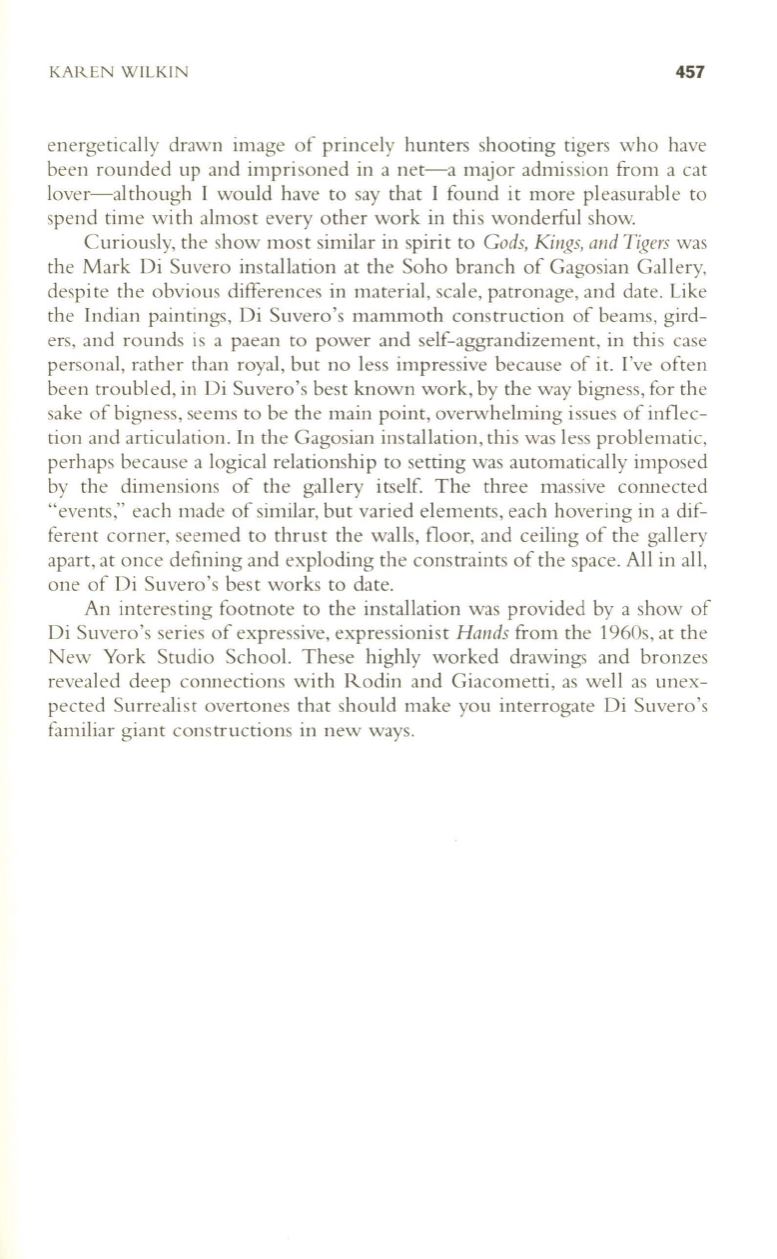
KAREN WILKIN
457
energetically drawn image of princely hunters shooting tigers who have
been rounded up and imprisoned in a net-a major admission from a cat
lover-al though I would have to say that I found it more pleasurable to
spend time with almost every other work in this wonderful show.
Curiously, the show most similar in spirit to
Gods, Kings, and Tigers
was
the Mark Oi Suvero installation at the Soho branch of Gagosian Gallery,
despi te the obvious differences in material, scale, patronage, and date. Like
the Indian paintings, Oi Suvero's mammoth construction of beams, gird–
ers, and rounds is a paean to power and self-aggrandizement, in this case
personal, rather than royal, but no less impressive because of it. I've often
been troubled, in Di Suvero's best known work, by the way bigness, for the
sake of bigness, seems to be the main point, overwhelming issues of inflec–
tion and articulation. In the Gagosian installation, this was less problematic,
perhaps because a logical relationship to setting was automatically imposed
by the dimensions of the gallery itself. The three massive connected
"events," each made of similar, but varied elements, each hovering in a dif–
ferent corner, seemed to thrust the walls, floor, and ceiling of the gallery
apart, at once defining and exploding the constraints of the space. All in all,
one of Di Suvero's best works to date.
An interesting footnote to the installation was provided by a show of
Oi Suvero's series of expressive, expressionist
Hmlds
from the 1960s, at the
New York Studio School. These highly worked drawings and bronzes
revealed deep connections with Rodin and Giacometti, as well as unex–
pected Surrealist overtones that should make you interrogate Oi Suvero's
familiar giant constructions in new ways.


